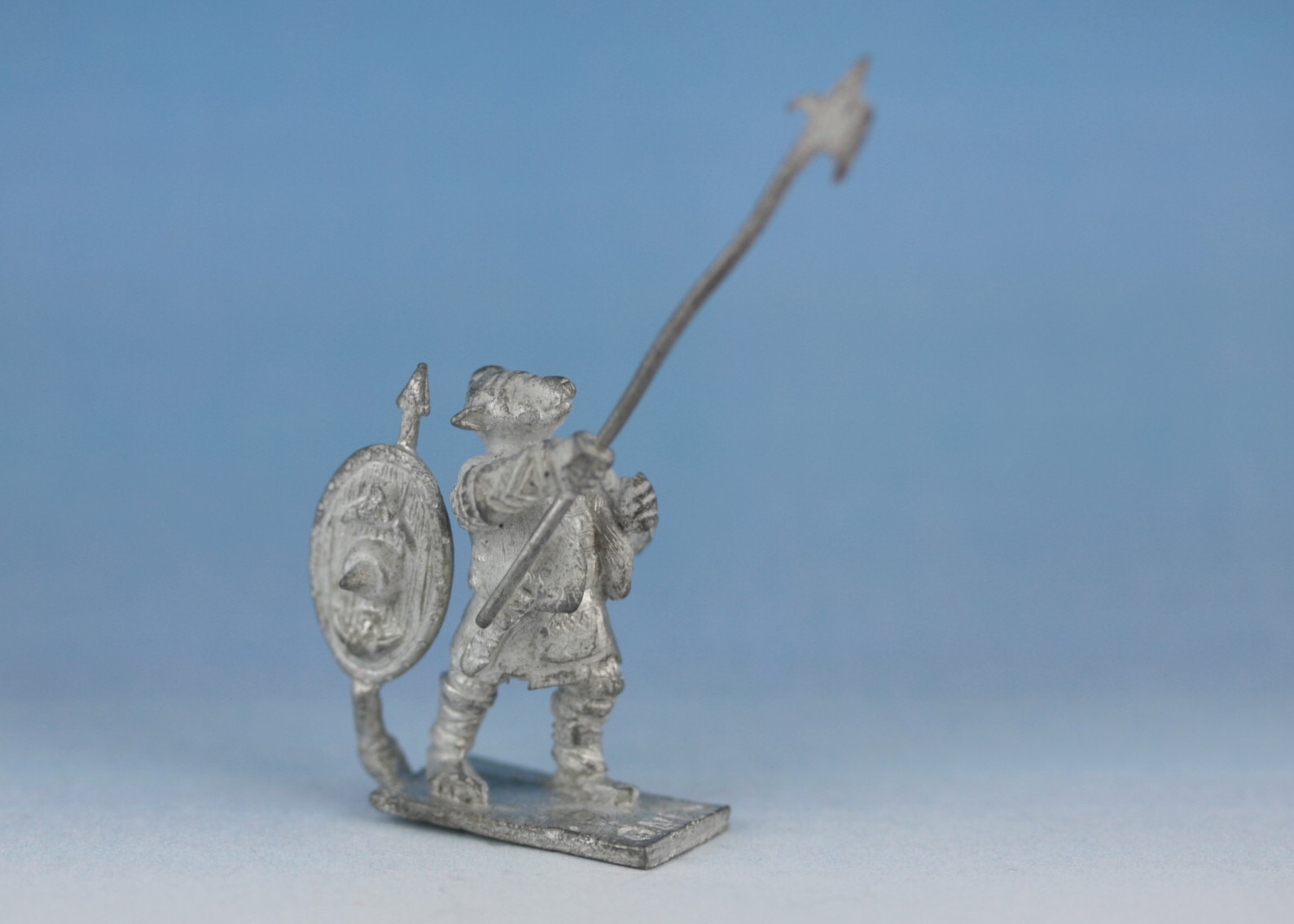Guisarme-Voulge
(Pruning Cleaver)

<
MINIFIGS, GNL7
(http://www.dndlead.com/Minifigs/DD/GNL7.jpg)
>
*template**template*
Guisarme-Voulge
(Pruning Cleaver)

<
MINIFIGS, GNL7
(http://www.dndlead.com/Minifigs/DD/GNL7.jpg)
>
| Weapon Type | Approximate
Weight in Pounds |
Size S or M | Size L | Notes | Length | Space Required | Speed Factor | 0 | 1 | 2 | 3 | 4 | 5 | 6 | 7 | 8 | 9 | 10 |
| Guisarme-Voulge ** | 150 | 2-8 | 2-8 | includes Lochaber Axe | 7'+ | 2' | 10 | -2 | -2 | -1 | -1 | 0 | +1 | +1 | +1 | 0 | 0 | 0 |
** DISMOUNTER!: These weapons are capable of dismounting
a rider on a score equal to or greater than the "to hit" score.

right = lochaber axe
| Weapon Type | Approximate
Weight in Pounds |
Size S or M | Size L | Notes | Length | Space Required | Speed Factor | 0 | 1 | 2 | 3 | 4 | 5 | 6 | 7 | 8 | 9 | 10 |
| Lochaber Axe ** | 150 | 2-8 | 2-8 | includes Lochaber Axe | 7'+ | 2' | 10 | -2 | -2 | -1 | -1 | 0 | +1 | +1 | +1 | 0 | 0 | 0 |
** DISMOUNTER!: These weapons are capable of dismounting
a rider on a score equal to or greater than the "to hit" score.
In its early, crude forms this weapon is the same as a voulge.
Development of the Lochaber axe added a hook to the weapon, either
as a tip
or a blade backing, and in this form it is nearly identical to the
guisarme-voulge. To all intents and purposes the two forms are so
nearly the same as the types of voulges they resemble that there can
be no real differentiation between them as far as function and form
are concerned.
Continental Europe developed the pole cleaver as the voulge, while
the Scots in the British Isles developed the same thing and called
it
the Lochaber axe. Both types of pole arms were developed to deliver
a powerful cleaving blow, just as the pole axe family were designed
to
do. Both forms had secondary functions which were aimed at keeping
enemies at a distance and/or dismounting them.
|
|
|
|
|
|
*template***template*